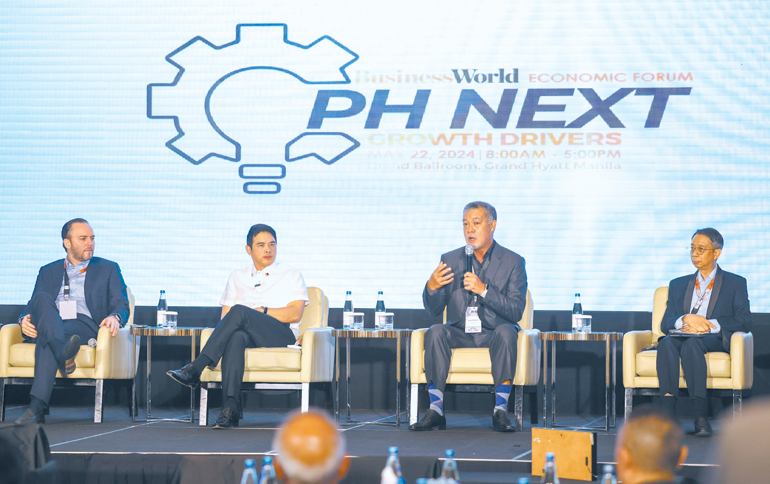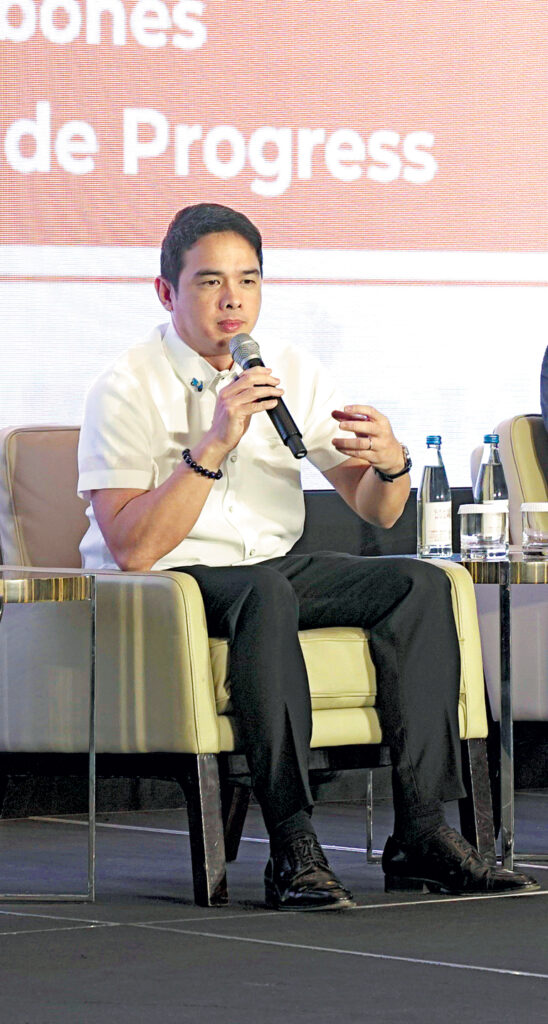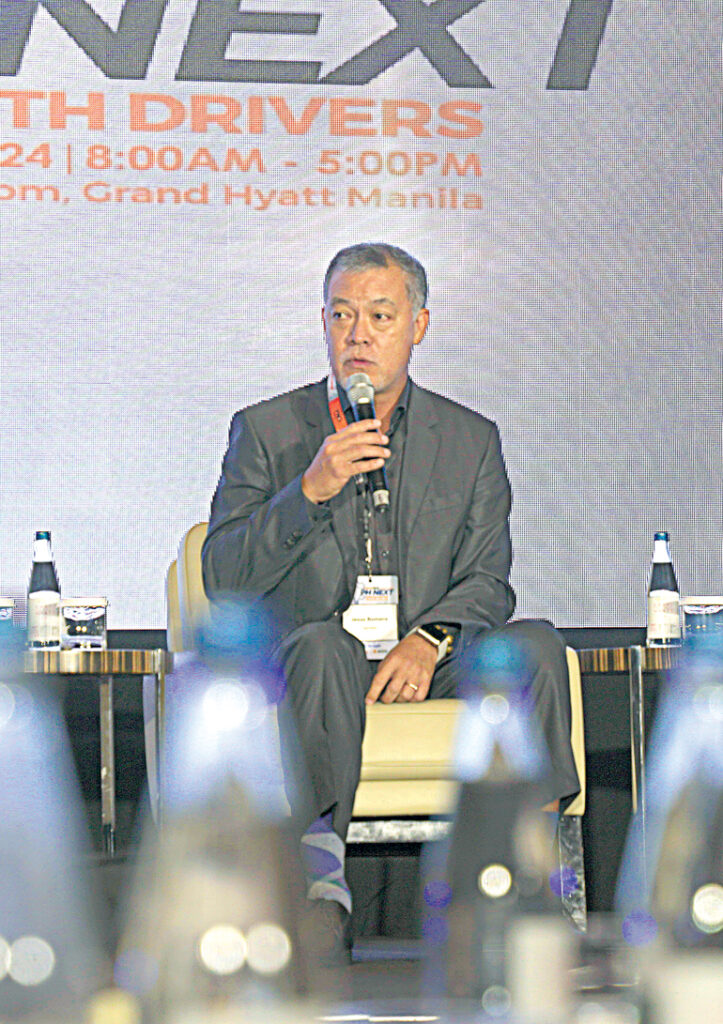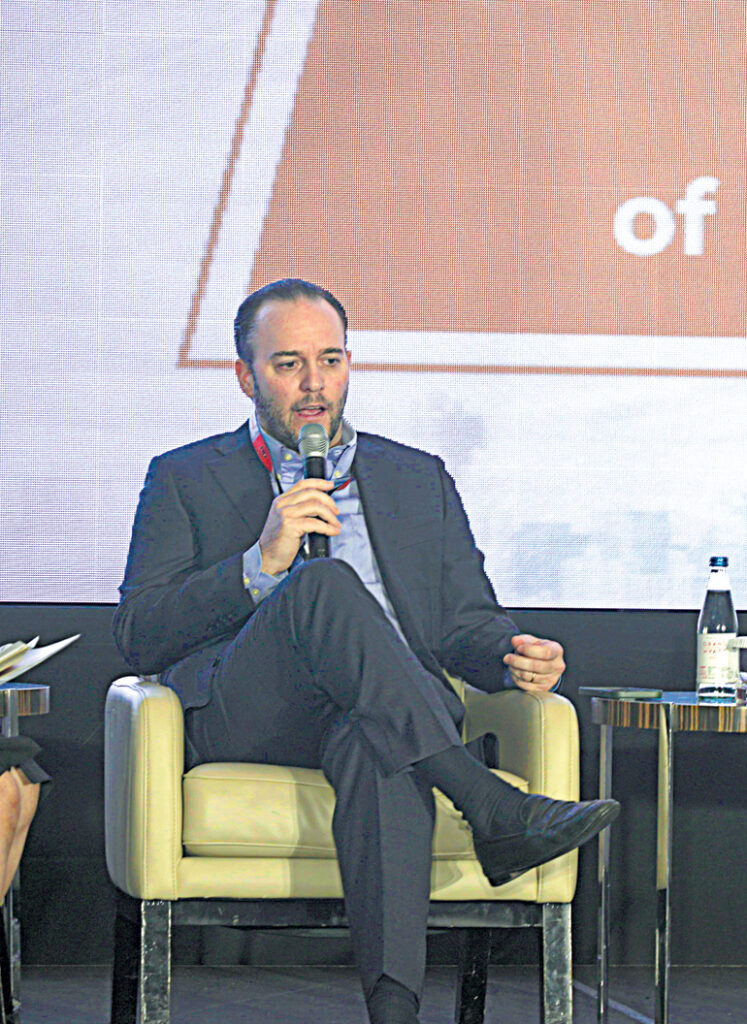Readiness to strengthen economic progress

By Angela Kiara S. Brillantes, Special Features and Content Writer
The Philippines remains as a shining example of economic progress, with industries like infrastructure, telecom, and mobility leading the way in growth. As these sectors experience continuous growth, how, then, can they keep up this momentum and further enable the country’s economic growth in the coming years?
In the first panel discussion of this year’s BusinessWorld Economic Forum last May 22, panelists representing significant players in both physical and digital infrastructures shared their insights and outlook on the challenges and opportunities for infrastructure to contribute to the nation’s economic progress.
Among the panel’s takeaways, behind successful recent development in the Philippines is connectivity, which has seen to be at the center of everything. More than improving economic prosperity, connectivity has the power to transform industries and societies; and, according to George I. Royeca, chief executive officer at Angkas, the power of connectivity has recently been found in creating jobs and improving Filipinos’ living standards.
“The means for connectivity is used for livelihood of Filipinos. There are a lot of jobs that are being facilitated through mobile platforms or mobile internet-enabled platforms. That gives you a preview of the potential for human capital and how we can use technology for the masses to uplift their lives, create value for them, and increase their value while doing so,” Mr. Royeca said.
Connectivity is evolving and transforming mobility, and creating better cities to live in. Ride-hailing apps like Angkas leveraged this opportunity to address transport needs in the Philippines as mobility has become a more essential part of daily life.

“Mobility for us is like oxygen; you need mobility wherever you are,” he stressed. “At that level, we focus on the workforce and making sure we give them an affordable and safe way to the workplace. It is something that is always going to be needed no matter what,” he said.
Meanwhile, Rafael F. De Mesa, head of economic estates at Aboitiz InfraCapital, Inc., shared positive prospects that await the Philippines, among which is that it is one step forward into becoming an attractive investment destination.
“For us, in developing economic estates, we’re very encouraged [by] the interest we are seeing as we move around in the region. We’re on the radar already. The big part of that is the government’s push to get out there and promote the country and highlight the benefits of locating here, as well as the reforms that have been made to make it an attractive investment. We’re quite optimistic. We’re positioning ourselves to take advantage of that interest in the Philippines,” Mr. De Mesa said.
UNLOCKING OPPORTUNITIES
Further into the digital infrastructure, digital connectivity is pertinent today, especially, when it has a profound influence in daily life.

Emmanuel “Manny” Estrada, vice-president for regulatory development and strategy at Globe, said the Philippines is at the right track of embracing digitalization, adding that digital connectivity has enabled people to access technology and online services that fuel development moving forward.
“Everyday, we see how the internet and IT technology impact our daily lives, from social media, connecting to friends, to doing your daily jobs,” Mr. Estrada explained. “In our daily lives, we cannot do without a solid connectivity, even our ride-hailing apps and online selling all depend on that.”
Mr. Estrada also pointed out the need for further investments and innovations in connectivity as development becomes more reliant on digital connectivity.
“While connectivity is being commoditized, there is also room for growth to continue to invest in connectivity and innovate for the services, because everybody needs to go to digital,” he said.
Furthermore, Jesus C. Romero, senior executive vice-president and chief operations officer at Converge ICT Solutions, Inc., shared their company is a few steps ahead as the misconception of expensive internet is decreasing in recent years due to the rise of low-end products that are both affordable and accessible to Filipinos.
“[Before], broadband was an area that was totally underserved. The Philippines is geographically positioned to being a telecom hub. The first thing we did is to adjust rates so that it becomes more affordable, make a nationwide fiber access network. The industry needs to make sure that they can provide the service, make it available and affordable so that Filipinos can consume it,” Mr. Romero shared.
“Today, the whole fiber broadband industry is more vibrant; we’ve all moved forward to make this a better market serving more customers,” he added. “Last year, we took another step. We took fiber broadband down to an affordable level for the masses.”
SIGNIFICANCE OF TALENT
As digitalization becomes more of a necessity, the country has been reaping its benefits as efforts in this area continue to increase. How, now, can the country fully utilize it toward even more substantial growth?
Mr. Royeca of Angkas underscored the significance of tapping into the potential of the young talent and workforce in the country. One way to do this is to upskill employees.
“[W]e have very talented developers; [but] the problem is experience. [Yet,] we know what we want; we know what kind of skills that we want. This gap is an opportunity because the already talented young population that we have, we can accelerate their growth into highly skilled workers just in terms of this paradigm shift,” he said.
For their part at Angkas, Mr. Royeca noted that they seek to present the ride-hailing app more as a platform that can create financial opportunities and uplift lives, especially in informal sector.
For this to be realized, however, Mr. Royeca highlighted the need for inculcating financial literacy and a “nanopreneur” mindset among its riders.
“Financial literacy is not just knowing how to loan or getting your documents ready, but it’s a mindset. It’s about how we move them (motorcycle drivers) from a single-income household to a dual-income household,” he explained. “A lot of these people look at motorcycles as a way for their economic freedom or to get out of the poverty line. It’s not as simple as going to the motorcycle business, but how do we reinforce that nanopreneur [mindset] to be able to expand and thrive.”

Mr. Romero of Converge, meanwhile, mentioned of the need for interventions in upskilling new entrants to the workforce.
“There is always this issue that there’s supposed to be a lot of graduates; but when you look at [them], they’re good enough to hire but still lacking,” he shared. “One of the things we’re working on with other parties is [determining] what kind of intervention will be made available to them in the area of digital services where their skill sets can be dramatically improved. What content can be put there, monetized, subsidized, or something people can afford? Let’s multiply this concept. We’re trying to put it together and make it available.”
Mr. De Mesa of Aboitiz InfraCapital also emphasized the need for honing skills and cultivating better leaders.
“Today, our advantage is our young and growing population, but the question is how we evolve later and ensure this growth is sustainable. There’s a need to develop better leaders, people with more interpersonal skills, it’s a much wider thing but it’s an opportunity, we just need to plan for it and take advantage of it,” Mr. De Mesa said.
A NATIONWIDE APPROACH
Also emphasized during the discussion was the collaborative approach among public sector, private sector, and society as whole.
“The only way to get this done is [to make sure] it is well-socialized and communicated (and the Filipino understands) what is needed to be done, then they’ll be more willing to work together. It is a whole-of-society approach, every single element and stakeholder will be able to contribute to this and push for it and make sure nothing gets sidetracked. Otherwise, it just becomes another coffee-table book at some point.” Mr. Estrada of Globe said.

For Aboitiz InfraCapital’s Mr. De Mesa, collaborative efforts are key to make the Philippines become an attractive destination for investments.
“With the Philippines, it’s never been a question about its potential. It’s about being able to fulfill that potential. If we cooperate and coordinate more, we can make the Philippines a more compelling destination for investment,” he said.
“Between the government and private sector [and with] things like the Private Sector Advisory Council, I think that sends a strong message to the world about the Philippines being serious in attracting investments,” he added. “I’m hopeful that will continue beyond administration and ultimately be able to fulfill our potential in the long run.”
Adding to this, public-private partnerships are seen to stimulate innovation and bring out the potential of industries for economic development.
“There is strength in partnership with the government because they provide the parameter, landscape, and the platform for which we can do many things. This can be a learning to a lot of agencies, and you need to make these types of mechanism to experiment on innovative strategies on how to unearth the potential of various industries, service, and products,” Mr. Royeca of Angkas said.



